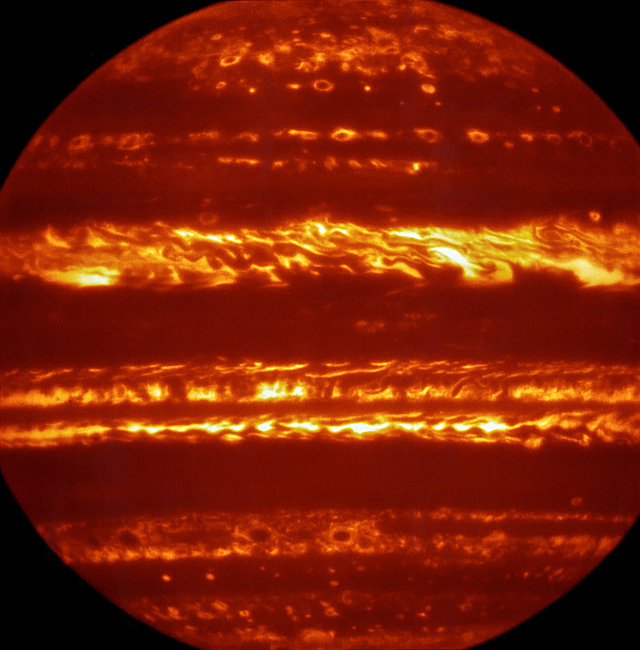
At the UK’s Royal Astronomical Society’s National Astronomy Meeting being held in Nottingham new images of the planet Jupiter were presented, obtained with the infrared VISIR instrument installed on ESO’s VLT. They will help better understand Jupiter’s atmosphere on the occasion of the arrival of NASA’s Juno space probe, scheduled for July 4, 2016.
The mapping work has been going on for some time in an international collaboration. NASA created a map using the Hubble Space Telescope, more telescopes in Hawaii and Chile contributed and are still contributing and among them there’s the VLT (Very Large Telescope) with its VISIR (VLT Imager and Spectrometer for mid-Infrared) instrument. A team led by Leigh Fletcher of the British University of Leicetster created high-resolution infrared maps using the VISIR instrument, which was recently upgraded.
The observations were carried out between February and June 2016 to obtain information on Jupiter’s atmosphere on the occasion of the arrival of the Juno space probe. The elapsed time revealed the changes in Jupiter’s atmosphere, also thanks to the TEXES instrument installed on NASA’s IRTF (Infrared Telescope Facility) in Hawaii. Observations made at different wavelengths allowed to optimize the detection of the different elements and the cloud layers to create global maps.
The researchers had access to various short movies of Jupiter’s atmosphere from which they could choose individual images that had the best quality. Putting them together it was possible to create a new image of the layers of Jupiter’s clouds, which appear in silhouette above the glow coming from inside the planet.
These studies will support the mission of the Juno space probe, which is about to enter Jupiter’s orbit. The new maps will allow the mission scientists to find the most interesting targets to be studied with the various instruments Juno is carrying. All the data put together will improve our knowledge of Jupiter.

